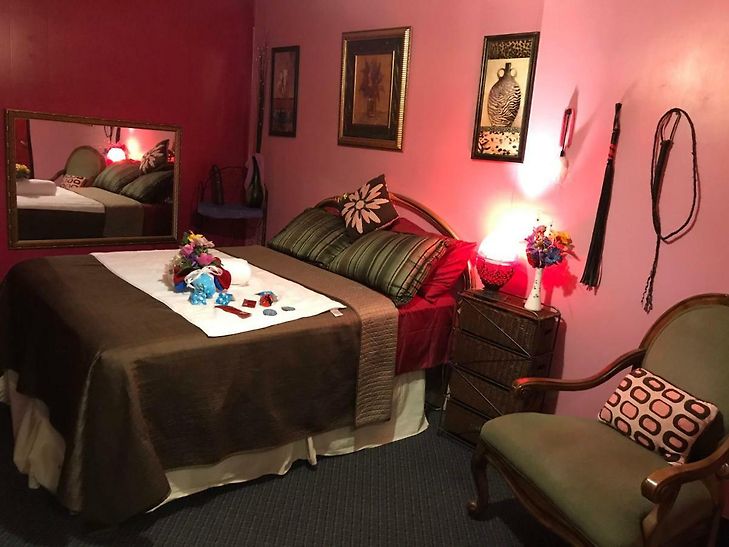Copyright 2021 by Gary L. Pullman
Our review of some of Nevada's Wild West towns along Highway 50 and Interstate 80 reveal some of the motives westward travelers and frontier settlers had in migrating from points east. Watering holes and bodies of water along overland trails (like the existence of the trails themselves); the building of the Transcontinental Railroad; discoveries of silver, gold, lead, and other ores; and politics brought men, women, and children west, where the frontier seemed a land of possibilities and, perhaps, for some, wealth, as well as adventure.
We can pretty well guess why prostitution was widespread throughout the West. There were few women and lots of men. The law of supply and demand made brothels lucrative business ventures—for their owners, at least—and provided employment for women, which was scarce on the frontier. There were, after all, only so much demand for laundresses, schoolmarms, seamstresses, store clerks, waitresses, and the like, and, aside from these occupations, respectable women had few options. Sometimes, a woman became a “soiled dove” simply because she had no other alternative.
What else can we discern by investigating some of the brothels known to have existed in Nevada during the nineteenth century? A fairly well documented establishment of this type was Donna's Ranch in Wells. During its Wild West heyday, this bordello, which has been in operation since 1867, had two major types of clients: the men constructing the Central Pacific Railroad and the cowboys who drove herds to the railroad's cattle-boarding locations and sometimes paid for the prostitutes' services with cows in lieu of dollars. Its more recent owners have included heavyweight champion Jack Dempsey (1895-1983).
The Desert Club's contemporary look. Source: Desert Club Girls
The Desert Club, a Battle Mountain brothel that first opened its doors in the late 1800s, includes only five rooms. It's back in business, having reopened under new management in 2016, after closing in 1991, having been temporarily transformed into a mining museum during the interim. Unfortunately, nothing much is known about its operations during its frontier days.
The Pussycat Ranch (aka Pussycat Saloon, aka Pussycat Brothel) once stood on Riverside Street in Winnemucca, but it has since not only close but been demolished. In its flower, the Pussycat boasted a large, ornate bar, among its other diversions.
The Cosmopolitan, presumably, has seen better days. Source: nevadaadventures.com
Located in Belmont, the Cosmopolitan Saloon satisfied the needs of his clientele during the latter half of the 1800s. The July 27, 1874, edition of the Belmont Courier's June 27, 1874, noted that the law provided the means by which to quickly suppress such business enterprises and suggested that local government officials had the moral duty to do so. Such a “hurdy dance house,” the paper proclaimed was “a moral wrong,” if ever there was one, injurious to young and old alike, should they succumb to the establishment's “alluring temptations.”
The Cosmopolitan was a dangerous place to visit because of the gunfire that sometimes occurred on the premises as well, the article noted, although, admittedly, recent shootings had not resulted in any fatalities. Should a death occur as the result of such irresponsible conduct, however, the Courier reckoned that the county was likely to bear a cost of “$3,000 to $10,000 to prosecute the case.”
In commenting on the Courier's article, in “Hurdy houses, hurdy girls flourished in boom towns,” an installment in the Pahrump Valley Times's series of articles concerning Nevada's “history of prostitution,” the author, historian Bob McCracken, points out that “prostitutes were among the first arrivals in a mining boom town” and that they were held in esteem by men, who “generally saw them as tough and resourceful, passionate and fun-loving people with big hearts who provided an essential human service.”
Among the other bordellos that the article mentions is the Crook Shop. Regarding this establishment, McCracken reports on the double standard of the times regarding men, women, and prostitution. Men who availed themselves of “hurdy girls” might retain their respectability; the prostitutes, on the other hand, who were guilty of the same risque behavior, were regarded as disgraceful:
“It was noted that a woman who danced in the Crook Shop (a local brothel) was not admitted to a 'respectable party' while the man who danced with the 'hurdy-gurdy girl' suffered no diminished in respectability. Why should that be, the item asked: 'If there is any difference between Tweedle Dee and Tweedle Dum, we confess our ignorance' (Belmont Courier, June 27, 1874).”
Hurdy gurdy girl. Source: hurdygurdyanthropology.
Note: Most historians make a distinction between "hurdy gurdy girls," German frauleins who played the hurdy gurdy and danced with men for a price (usually fifty cents per dance and another fifty cents for the couple's drinks) and "soiled doves" who entertained their clients in a much more "intimate" manner.










No comments:
Post a Comment